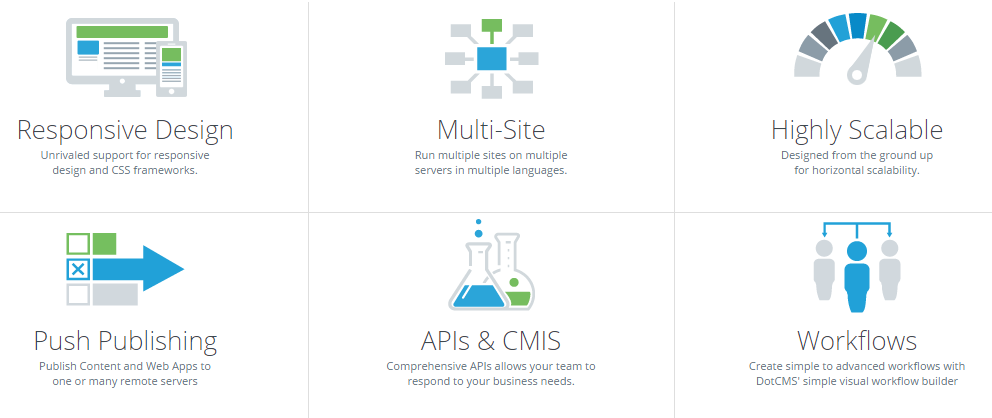DotCMS: Breaking Down Barriers for Developers in Content Management

To wrap up our featured week with dotCMS, I’m taking a look at how the platform opens doors for developers.
The enterprise-grade Java, open source CMS recently beat off stiff competition to win the 2014 Critics' Choice Award for Best Cloud CMS for SMB.

Previously, we interviewed dotCMS CEO Tim Brigham, caught a product walkthrough from CTO Will Ezell, discussed the dotCMS 3.x series, and caught up with dotCMS both on the cloud and at home.
Now though, here’s what the award-winning platform is doing for developers.
DotCMS as an xCMS
DotCMS is many, many things, and according to Will Ezell, the platform’s CTO, one of those things is an xCMS.
Otherwise known as a User Experience Platform, dotCMS defines xCMS in the following way:
“An xCMS is a system that provides native content management, search, APIs, rapid development tools and personalization [features] that allow an organisation to centralise presentation and/or management of disparate content and UX systems.”
Will Ezell goes on to explain in more detail in the video below.
Essentially, what Will Ezell has done, is successfully make the case that dotCMS is more than just a CMS for websites. It’s a “hub” which can push content through all sorts of different channels. It’s a product ready for the generation of Internet-of-things.
DotCMS provides easy and open APIs to query, retrieve (xml & json) and write content, binary assets and even remote widgets. These API calls have been built specifically so that content can be retrieved in real-time and used by external systems.
Hyper-friendly to Developers: Geolocation, Frameworks & More
To take a closer look at how dotCMS makes the leap beyond standard websites, here are some of its key features used on the ground.
First up, dotCMS is extremely framework friendly. It can be used with any responsive framework, including Bootstrap, Foundation, Gumby and Skeleton.
Due to being able to use their preferred tools and frameworks, developers can decide between working with a fully customized site, or a completely template and theme controlled presentation or frankly, anywhere in between
Just take a look at dotCMS’ pre-designed themes and templating documentation for a better idea of how this entire process can be streamlined.

Furthermore, no proprietary tools are needed for web or Java development either, making life even easier and more familiar for development teams.
Elasticsearch driven Geolocation is another feature worth noting. As long as there is a content type with a field supplying latitude and longitude coordinates, content can be dynamically displayed or hidden using Elasticsearch Geolocation queries.
Developers can also have a bit of fun with dotCMS’ remote widget API. Widgets (essentially little apps) can be delivered, fully rendered, as snippets of code to remote systems by calling a RESTful url. All it takes is javascript to pull and display content rich widgets into any webpage or external system.
Support for Spring & OSGi -dynamic plugins as well as CMIS support provide even more room for creativity and options for integration.
DotCMS touts themselves as the developer friendly CMS. No doubt, they might just be your new CMS BFF.
To find out more about dotCMS, visit their website, or explore more via our CMS Directory.